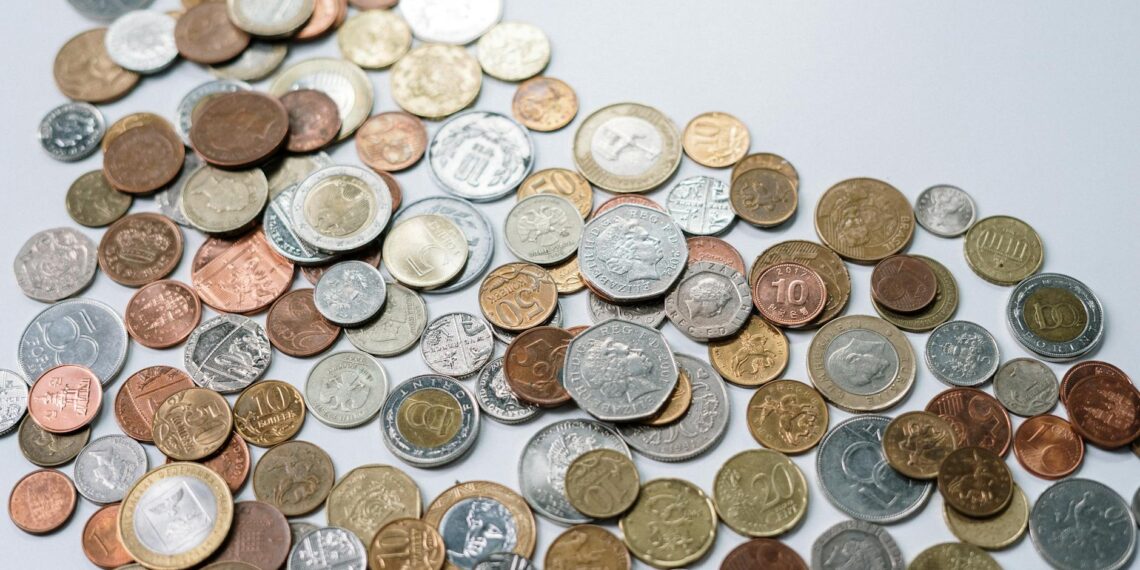Several tests can help you determine if a coin is made of silver, ranging from simple home methods to more advanced and professional techniques.
- Dates:
– US dimes, quarters, and half dollars minted before 1965 are 90% silver.
– US nickels minted between 1942 and 1945 with a mint mark above Monticello are 35% silver.
– US Kennedy half dollars minted between 1965 and 1970 are 40% silver.
- Edge: Real silver coins typically have an all-white edge, while clad (silver-plated) coins show a copper stripe. However, some coins with faint copper traces might still be partially silver, such as the 40% silver Kennedy half dollars mentioned above.
- Hallmarks and Stamps:
– Many silver items, including coins, will have hallmarks or stamps indicating their purity.
– Common stamps include “925” for sterling silver (92.5% pure) and “999” for fine silver (99.9% pure).
– You might need a magnifying glass to see these markings clearly.
- Magnet Test: Silver is not magnetic. If a magnet strongly attracts the coin, it likely has a ferromagnetic core and is not pure silver. You can use a strong neodymium magnet for this test.
- Ice Test: Silver is an excellent thermal conductor, so it will melt ice very quickly. Place an ice cube on the coin and compare its melting speed to one placed on a non-silver surface.
- Sound Test (Ping Test): Gently strike the coin against another metal object. Real silver coins should produce a high-pitched ringing sound, while fake or silver-plated coins might make a dull thud.
- Weight Test: Compare the weight of the coin to the official specifications for that particular coin, which can often be found online. Real silver coins have a specific density and weight, so discrepancies could indicate a fake.
- Odor Test: Pure silver has little to no odor. If the coin has a metallic smell, it might not be sterling silver or could be silver-plated.
- Acid Test:
– Apply a small drop of nitric acid to an inconspicuous spot on the coin.
– Real silver will react by showing a milky white color.
– Caution: Acid tests can damage your coin, so consider this a last resort and perform it with safety precautions (gloves, safety goggles, ventilation).
- Bleach Test: Applying bleach to silver will cause it to tarnish quickly and turn black. However, this test is also potentially damaging to the coin and should be used cautiously.
- X-Ray Fluorescence (XRF) Analyzer: These devices can accurately determine the composition of a metal without damaging it. This is the most accurate and reliable method, though the equipment is expensive. You can often find local coin dealers or jewelers with XRF scanners who may test your coins for a fee.
- Professional Appraisal: A certified appraiser or reputable jeweler can use their expertise and specialized tools to accurately assess the purity and authenticity of your silver coin.
Important Notes:
- No single test is foolproof, so using multiple methods is recommended for a more confident assessment.
- Some tests, particularly the acid and bleach tests, can potentially damage your coin, so exercise caution and choose tests appropriate for the coin’s value and your risk tolerance.
- For valuable or sentimental coins, a professional appraisal is the safest and most accurate option.









How can I test silver coins at home?
Again. So not silver. Silver not silver silver as you can see the one that’s not silver is much more dull. And sort of metallic sounding. And the silver. One is very pure.